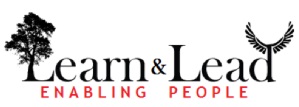Continuing my post of My Top 10 Mobile Apps for 2014, I share my top 10 productivity enhancing mobile apps. In the last year, I found myself using the smartphone mobile more and more, not requiring me to use my laptop many a times. These apps allowed me to access my data anywhere and allowed me to be ubiquitous online.
My Top 10 Productivity Mobile Apps:
- Calendar: While there are many Calendar apps available, I settled for native HTC Calendar app as my preferred app. The native app allow me to sync multiple accounts. I synced Microsoft Exchange for my office calendar. You can additionally sync Google, Outlook.com and Yahoo for your personal calendars. I found useful the ability to search for location on Google Maps directly from the calendar invites if the location was entered in the meeting invites. It is also extremely easy to dial conference call numbers by simply clicking on the numbers within the invite text. The HTC native app shows me the invite text while making the call so I don’t have to remember the call dial-in codes while making the call.
- Email (Mail, Gmail, Outlook): When on the move, you need access to email. Technically you could use one email client for all your work and personal email accounts. However I prefer to use different email clients for different email accounts. For my office Exchange account I use native Mail app. There is an email client for most services so you can use the ones you prefer. Interestingly as I write this post, I notice that there is a pre-release version of OWA for Android, which I believe will allow for better integration with Exchange and Office 365. Currently the ratings and reviews aren’t flattering but the app looks like a promising one to improve productivity.
- OneNote: I use OneNote for taking notes. I can create different notebooks and within that organize my notes in sections, sub-sections and pages. If you aren’t already using a software to organize your notes, I would highly recommend OneNote. You can sync your notebooks with your Outlook.com account and then access them on your phone using the OneNote app. You could also try Evernote which is also a popular app, though I haven’t used it much since we use OneNote at work.
- Google Keep: While OneNote is a full featured notes organizer, I just love Google Keep for its simplicity. Keep is a much lighter note taking app. This too can be synced on multiple devices so you have your data available on all devices whenever you need it. A very handy app for quick note taking.
- Task: I tried a few To Do apps but finally settled for native HTC Tasks app. I can sync multiple accounts and have my tasks with me all the time. the app has the usual end dates, reminders etc. If you sync to your office Exchange server, just remember to save your tasks on the server and not in the local PST while using your laptop.
- Online drives (Microsoft OneDrive, Google Drive, Dropbox): I am a late user of online drives that have been around for a while now. If you need to access your files wherever you go and on whichever device you use, you gotta use one of the online drives to store your files. Based on your preference, you can use Google Drive, Microsoft OneDrive or Dropbox. All three have their laptop interfaces and mobile apps that allow you to sync and access files from any device. I use OneDrive since it works better with Office365.
- Editing files (Microsoft Office Mobile, Polaris Office): While I don’t edit or create documents too often on my phone, but on the few occasion that I needed to, I was really thankful that I could actually edit document, spreadsheets and presentations on my phone. I started using Polaris Office for editing documents since this came pre-installed with my phone. It is a simple to use app and does the work just fine. I have since also discovered Microsoft Office Mobile that I prefer to use because of its better integration with OneDrive and Dropbox. If I need to edit documents on my online drives, it is easier to use Microsoft Office Mobile. If you are using Google Drive, you can always use Google Docs.
- Gesture typing / Trace keyboard: Not really an app but a feature on Android phones is Gesture typing (on most Android phones), or Trace Keyboard (on HTC). This allows you to type by simply tracing your fingers over the keyboard letters without lifting your finger. This is a great feature to start typing faster and I would recommend you get used to this feature. It is easier to use this feature if you are comfortable with the QWERTY keyboard layout. I am not sure if the iPhone has this built in feature, but I discovered Swypeapp on iTunes that allows you to type without lifting your finger.
- Conference Caller: If you are on conference call bridges a lot, then you need to give Conference Caller a try. Conference Caller works like a general phone book for your conference call meeting details. Each phone book item consists of name, conference code and (optional) pin. I stored details of my various conference call bridge numbers in the app. It makes dialing in to a conference call bridge a one touch affair since the app dials your conference ID and pin numbers after dialing your conference call bridge number. You may need to experiment with settings for your conference call service but once you manage to do that, this makes getting on to a conference call so much easier.
- Pocket: Online bookmarking has been around for a while now, even though it no longer seems to be very popular now. However I found Pocket really handy. While browsing online either on the laptop or the phone, I can send/share any link to Pocket. The app has a neat interface to access my saved links. You can tag your saved links for better retrieval.



I use few of them and its really helpful in daily life especially email and editing files. I really appreciate the online web apps development firm that makes these kinds of apps which is helpful in daily activities.
I share my top 10 productivity enhancing mobile apps. In the last year, I found myself using the smartphone mobile more and more, not requiring me to use my laptop many a times. These apps allowed me to access my data anywhere and allowed me to be ubiquitous online. Track Gps Location With Cell Phone Number